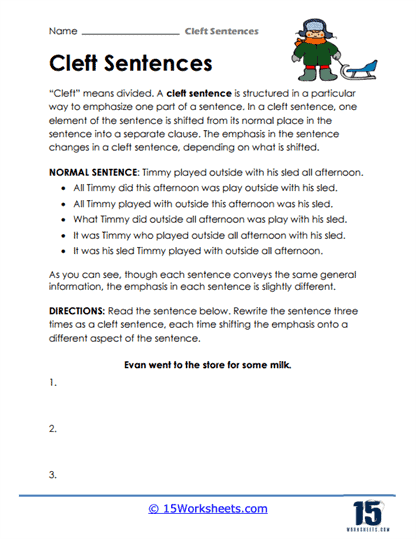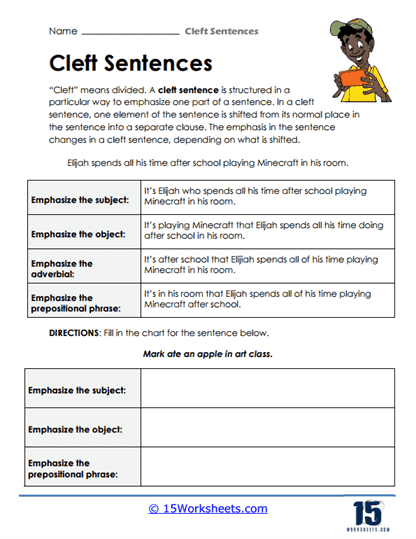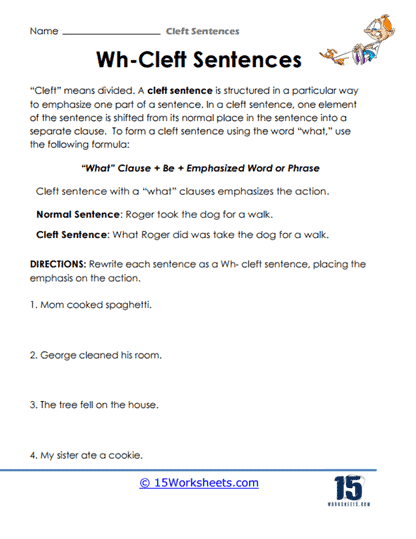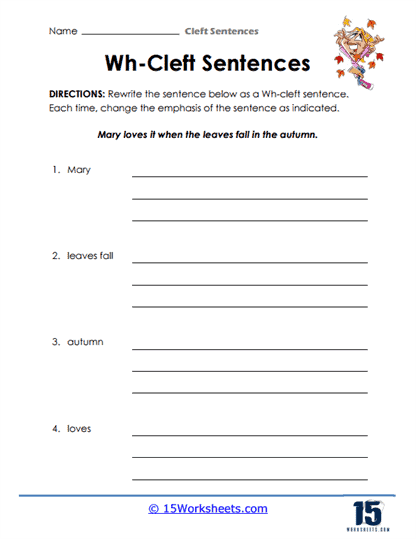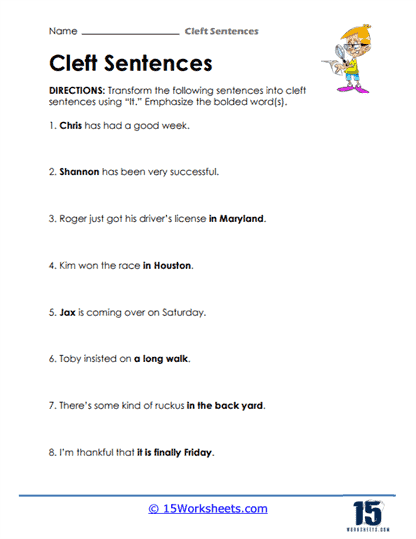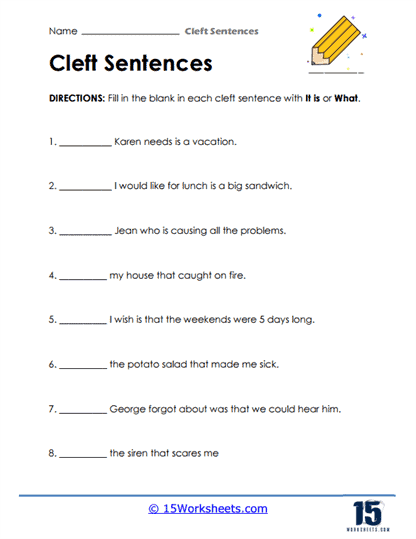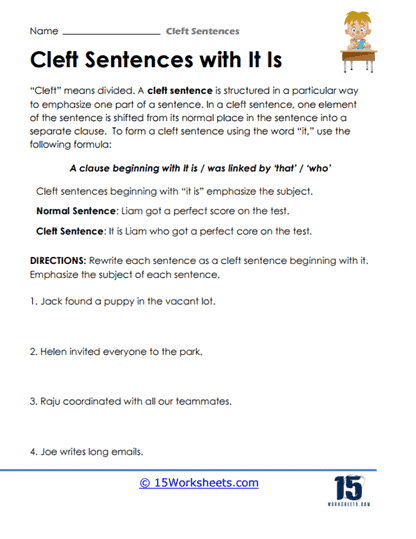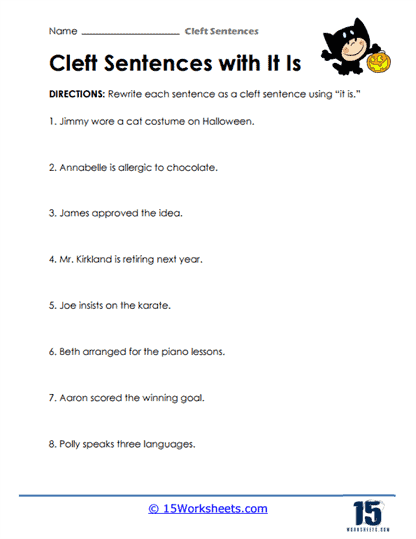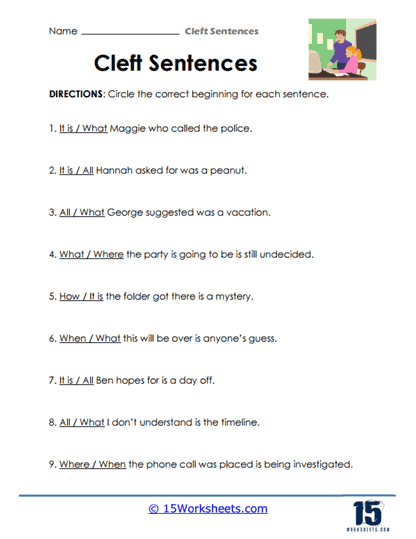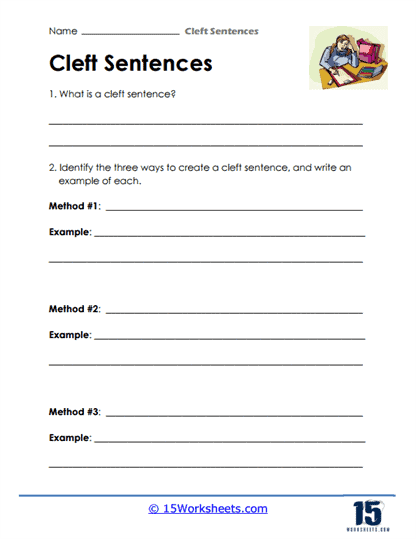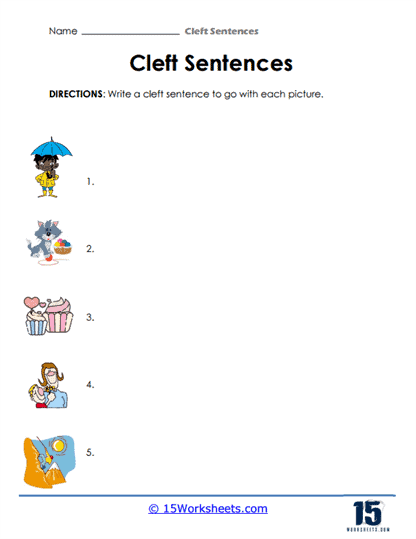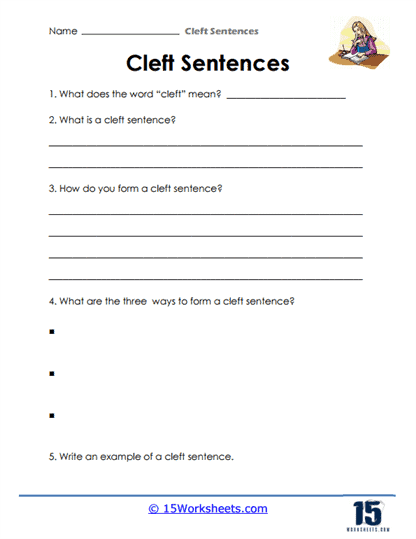Cleft Sentences Worksheets
About These 15 Worksheets
Cleft sentences are a unique grammatical structure used to emphasize a specific part of a sentence. They are particularly useful in English language learning because they help students understand and practice focusing on different parts of a sentence. Our cleft sentence worksheets will definitely aid students and teachers in this learning process.
By incorporating these exercises into their study routine, students can significantly improve their grammar, writing, and overall language skills. The emphasis on sentence structure, clarity, and variety not only aids in academic success but also in everyday communication, making these worksheets an essential component of language learning.
Understanding Cleft Sentences
Cleft sentences typically restructure a simple sentence to highlight a particular part. This is done by dividing the sentence into two clauses, using structures like “it is/was,” “what,” “who,” etc. For example, a simple sentence like “I lost my keys in the park” can be turned into a cleft sentence – “It was in the park that I lost my keys,” emphasizing the location.
Types of Exercises on Cleft Sentence Worksheets
Identification Exercises – Students are given a series of sentences and asked to identify the cleft sentences. This helps in recognizing the structure and understanding its use.
Conversion Tasks – These exercises involve converting simple sentences into cleft sentences. This helps students practice creating cleft sentences and understanding their emphasis.
Matching Exercises – Students match two halves of a cleft sentence, which aids in understanding how cleft sentences are structured.
Fill-in-the-Blanks – These exercises provide sentences with missing words or phrases, which students must fill in. This strengthens their ability to use the correct form in a cleft sentence.
Multiple Choice Questions – These questions ask students to choose the correct cleft sentence from a set of options, enhancing their understanding of different cleft sentence structures.
Translation Exercises – Students translate simple sentences into cleft sentences in their native language, or vice versa. This is particularly useful for ESL students.
Writing Prompts – Students use cleft sentences in a short paragraph or essay, applying the concept in a broader context.
Error Correction – Worksheets may include incorrectly formed cleft sentences, and students must identify and correct the errors.
Comparative Analysis – Students compare the emphasis in cleft sentences versus their simple counterparts, understanding the shift in focus.
Dialogue Creation – Creating dialogues using cleft sentences helps students understand how these structures can be used in everyday conversation.
Benefits of Cleft Sentence Exercises
Enhanced Emphasis Understanding – Cleft sentences are all about emphasis. These exercises help students learn how to focus on different parts of a sentence, a skill crucial in both writing and speaking.
Improved Sentence Variety – Regular practice with cleft sentences allows students to add variety to their writing, avoiding monotonous sentence structures.
Better Comprehension Skills – Understanding and using cleft sentences can improve overall comprehension, as students learn to identify what part of a sentence is being emphasized.
Enhanced Writing Skills – By practicing with cleft sentences, students can learn to write more clearly and effectively, particularly in terms of stating their points emphatically.
Grammar Mastery – These exercises reinforce other aspects of grammar, such as subject-verb agreement, clause structure, and use of pronouns.
Increased Vocabulary – Often, restructuring sentences into cleft sentences involves using different words or phrases, which can expand a student’s vocabulary.
Critical Thinking – These exercises often require a degree of analysis and decision-making, enhancing critical thinking skills.


